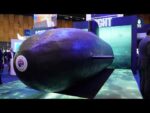The United States is escalating its military presence in the Caribbean following a series of confrontations with Venezuela. According to defense sources, ten F-35 Joint Strike Fighters are set to arrive in Puerto Rico as part of ongoing counter-narcotics and deterrence operations. This deployment comes just days after Venezuelan F-16s conducted a provocative flyby near the USS Jason Dunham, an Arleigh Burke-class destroyer operating in the region.
F-35 Deployment: Strategic Implications
The arrival of 10 F-35s marks a significant boost to U.S. airpower in the Caribbean. While it is unclear which branch of the armed forces they belong to, the presence of stealth fighters provides both kinetic and intelligence-gathering capabilities:
- Air Superiority – The F-35s’ stealth design and advanced radar enable them to dominate Venezuelan legacy aircraft, including F-16A/Bs and Su-30MK2Vs.
- ISR Capabilities – Equipped with advanced AESA radar, EO/IR sensors, and electronic intelligence suites, the F-35 can provide comprehensive surveillance over the Caribbean battlespace.
- Deterrence – The visible presence of F-35s in Puerto Rico signals U.S. readiness to respond swiftly to Venezuelan provocations or narco-terrorist threats.
Escalation With Venezuela
The deployment follows a provocative encounter in which two Venezuelan F-16s approached dangerously close to the USS Jason Dunham. U.S. officials characterized the maneuver as a “highly provocative show of force.”
The incident occurred just after U.S. President Donald Trump authorized a kinetic strike on a Venezuelan narco-terrorist boat, killing 11 suspected smugglers linked to the Tren de Aragua cartel. These developments highlight growing risks of miscalculation between Venezuelan forces and U.S. military assets operating in the region.
Naval Assets in the Region
The Caribbean theater is now one of the most militarized maritime zones in the Western Hemisphere. Current U.S. deployments include:
- 22nd MEU / Iwo Jima ARG – USS Iwo Jima (Wasp-class LHD), USS San Antonio (LPD), USS Fort Lauderdale (LPD), with 4,500 sailors and Marines conducting amphibious operations off Puerto Rico.
- Surface Combatants – USS Gravely (Arleigh Burke-class destroyer) and USS Lake Erie (Ticonderoga-class cruiser) operating in the southern Caribbean. USS Sampson remains docked near the Panama Canal.
- Submarine Presence – USS Newport News (Los Angeles-class SSN) is confirmed to be part of the operation, though its location is undisclosed.
This mix of air, surface, and undersea assets provides SOUTHCOM with a formidable presence, combining strike power, amphibious capability, and ISR reach.
Counter-Narcotics and Political Messaging
While officially tied to counter-narcotics operations, U.S. officials acknowledge that these moves are also directed at Venezuelan President Nicolás Maduro, who remains under U.S. indictment for narco-terrorism and cocaine trafficking in coordination with FARC insurgents.
The deployment of F-35s, coupled with amphibious and naval assets, suggests a dual-purpose mission:
- Suppressing cartel smuggling routes in the Caribbean.
- Applying military pressure on Caracas amid escalating tensions and Maduro’s ongoing defiance.
F-35s as a Force Multiplier
Beyond traditional strike missions, the F-35’s intelligence fusion capabilities make it a game-changer in this theater. Its ability to collect, process, and share sensor data across platforms enhances maritime situational awareness, supporting:
- Ship defense – Providing early warning of hostile aircraft or missile launches.
- Counter-smuggling operations – Tracking fast boats and identifying suspicious maritime traffic.
- Regional deterrence – Demonstrating to Venezuela and other actors that the U.S. retains dominance across all domains.









